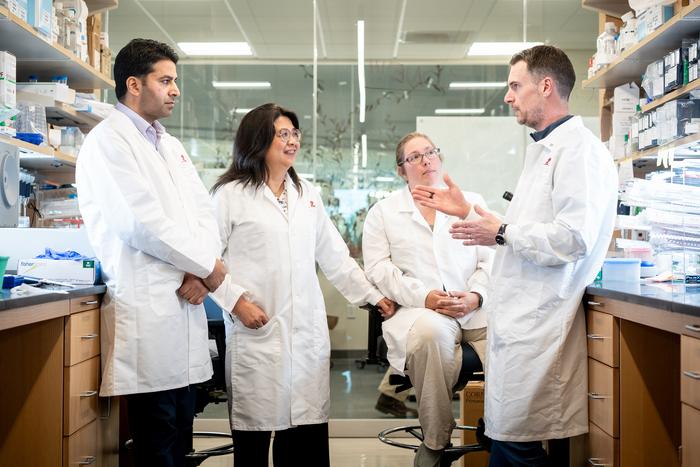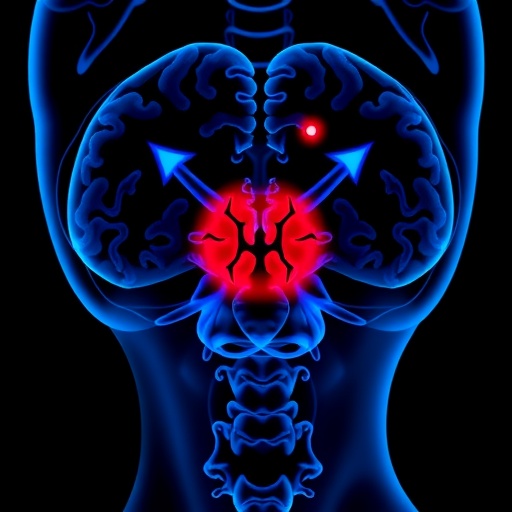A groundbreaking discovery announced recently by researchers at St. Jude Children’s Research Hospital sheds light on the molecular underpinnings of a high-risk pediatric brain cancer subtype and suggests a promising targeted therapeutic approach. The study focuses on SHH-medulloblastoma, a malignant brain tumor affecting children, especially those who inherit mutations in the ELP1 gene. This research not only clarifies the biochemical cascade triggered by ELP1 deficiency but also identifies an innovative pharmacological strategy that could transform treatment paradigms and improve survival outcomes.
Medulloblastoma, particularly the SHH-subtype, is distinguished by aberrations in the sonic hedgehog signaling pathway and remains a significant cause of childhood cancer mortality worldwide. Despite its clinical importance, the mechanistic details of how inherited genetic variants contribute to disease susceptibility have largely remained elusive. The research team at St. Jude tackled this challenge by focusing on ELP1, a gene previously implicated in cancer predisposition but with an unclear role in tumor development.
ELP1 is ubiquitously expressed across various tissue types, yet intriguingly, a loss-of-function mutation in this gene specifically predisposes children to SHH-medulloblastoma. This puzzling specificity prompted researchers to develop sophisticated mouse models lacking functional ELP1, enabling the precise examination of its role within cerebellar granule neuron progenitors, the cellular origin for this brain tumor subtype. Through these models, the team uncovered a pivotal connection between ELP1 loss and diminished activity of the tumor suppressor protein p53.
The investigation further revealed that ELP1 deficiency results in increased activity of MDM2, an E3 ubiquitin ligase that orchestrates the degradation of p53, effectively silencing its protective effects. This mechanistic insight provided a tangible target for therapeutic intervention—halting MDM2’s inhibition of p53 could potentially restore the tumor suppressor’s functionality and impede cancer cell growth. Realizing this possibility, the researchers pursued the use of MDM2 inhibitors in preclinical SHH-medulloblastoma mouse models that mimic ELP1 loss.
The significance of this work extends beyond the immediate therapeutic implications. It exemplifies how elucidating the biochemical and genetic mechanisms behind cancer predisposition can transition from laboratory discovery to tangible clinical innovation. Senior co-corresponding author Paul Northcott remarked on this translational journey, emphasizing that the research moved from identifying a gene of interest in a dataset to uncovering a precise molecular vulnerability amenable to targeted treatment.
Additionally, this discovery holds promise for improving the safety profile of medulloblastoma treatments. Current therapies, including radiation and chemotherapy, while effective to some extent, pose long-term risks of neurocognitive deficits and other severe side effects. By contrast, targeted therapies such as MDM2 inhibitors could offer higher specificity with reduced collateral damage, a critical consideration for pediatric patients whose developmental trajectories can be profoundly affected by aggressive treatments.
The study’s expansive author team encompasses experts in neuro-oncology, developmental neurobiology, cancer genetics, and pharmacology, indicating the collaborative and interdisciplinary nature of this breakthrough. Their inclusion of international researchers from prestigious institutions such as The University of Queensland, the German Cancer Research Center (DKFZ), and the Swiss Institute for Experimental Cancer Research (EPFL) attests to the global effort invested in decoding and tackling this devastating childhood disease.
Financial support from prominent organizations, including the St. Baldrick’s Foundation, National Cancer Institute, Deutsche Forschungsgemeinschaft (DFG), and ALSAC, has been instrumental. This backing highlights the vital role of dedicated funding in fostering innovative pediatric cancer research that seeks not only to extend survival but also to enhance the quality of life for young patients and their families.
Looking forward, the research team is preparing to advance their findings into clinical trial phases. Given the existing landscape of MDM2 inhibitors undergoing trials, the pathway to evaluating these agents for SHH-medulloblastoma patients with ELP1 deficiency is promisingly accelerated. Such translational momentum could rapidly alter clinical practice, offering hope to a population historically challenged by limited targeted treatment options.
This research also deepens the scientific understanding of tumor biology, particularly by clarifying how ubiquitously expressed genes can exhibit tissue- and disease-specific effects through nuanced molecular interactions. It underscores the intricacy of cancer genetics, where mutations may not directly damage canonical tumor suppressors but instead modulate the regulatory environment enabling cancer evasion mechanisms.
Ultimately, this landmark study from St. Jude exemplifies the transformative power of combining rigorous basic science with precision medicine approaches. By unraveling the biological mechanism connecting a pediatric predisposition gene to critical tumor suppressor pathways and exploiting that vulnerability therapeutically, the researchers have paved the way for safer, more effective, and personalized brain cancer treatments for children. Their work represents a hopeful stride forward in the relentless quest to conquer pediatric cancers while preserving the future potential of every young life impacted.
Subject of Research: Pediatric SHH-medulloblastoma; ELP1 gene deficiency; tumor suppressor p53 regulation; MDM2 inhibition as targeted therapy.
Article Title: Study reveals targetable mechanism behind high-risk predisposition gene in pediatric medulloblastoma
News Publication Date: May 15, 2025
Web References:
St. Jude Center of Excellence in Neuro-Oncology Sciences (CENOS): https://www.stjude.org/research/centers-of-excellence/cenos.html
Paul Northcott Lab: https://www.stjude.org/research/labs/northcott-lab.html
St. Jude Progress digital magazine: https://blogs.stjude.org/progress.html
St. Jude official website: https://www.stjude.org/
References:
Published in Cancer Cell, DOI: 10.1016/j.ccell.2025.04.014
Image Credits: St. Jude Children’s Research Hospital
Keywords: Medulloblastoma, Tumor suppressors, Pediatric brain tumors, ELP1 gene, p53, MDM2, Targeted therapy, Cancer genetics
Tags: cerebellar granule neuron progenitorschildhood cancer survival outcomesELP1 gene mutations in cancerhigh-risk childhood brain cancer treatmentsinherited genetic variants in pediatric cancerinnovative pharmacological strategies for medulloblastomamolecular underpinnings of brain tumorspediatric medulloblastoma researchSHH-medulloblastoma genetic mechanismssonic hedgehog signaling pathway in cancerSt. Jude Children’s Research Hospital discoveriestargeted therapies for childhood brain tumors





